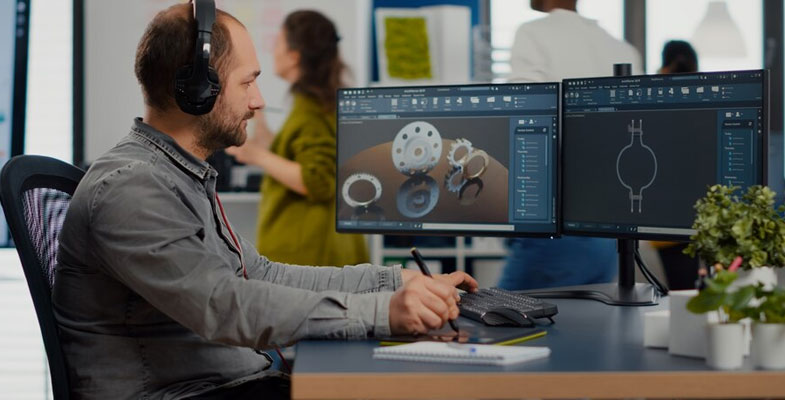Projects
Contact Us
+91 88324-40777
info@groworldtecknica.com

3D modeling software allows users to create three-dimensional digital models of objects, structures, characters, or environments. It is widely used in various industries, including animation, gaming, film production, architecture, product design, and engineering.
Here are some popular 3D modeling software tools:
- Autodesk 3ds Max: A comprehensive 3D modeling and animation software used in gaming, film, and architectural visualization.
- Autodesk Maya: A powerful software for 3D modeling, animation, and rendering, commonly used in film, TV, and game development.
- Blender: An open-source, free 3D modeling and animation software with a wide range of features suitable for various industries.
- ZBrush: Primarily used for creating high-resolution organic models and sculpting detailed characters, widely used in film and game development.
- Cinema 4D: A versatile 3D modeling and animation software with a user-friendly interface, suitable for motion graphics and visual effects.
- SketchUp: Known for its ease of use, SketchUp is popular in architectural design and offers both free and professional versions.
- SolidWorks: A parametric 3D modeling software widely used in mechanical design, engineering, and product development.
- Rhinoceros (Rhino): Used in industrial design, architecture, and jewelry design, Rhino provides accurate 3D modeling tools with flexibility.
- AutoCAD: Although primarily a 2D drafting software, AutoCAD also offers 3D modeling capabilities and is widely used in architectural and engineering design.
- Fusion 360: A cloud-based 3D modeling and design tool that combines mechanical design, simulation, collaboration, and machining capabilities.
These software tools provide a range of features such as polygonal modeling, NURBS modeling, sculpting, texturing, lighting, animation, and rendering. The choice of software depends on the specific requirements of the project, the industry, and the skillset and preferences of the user.
